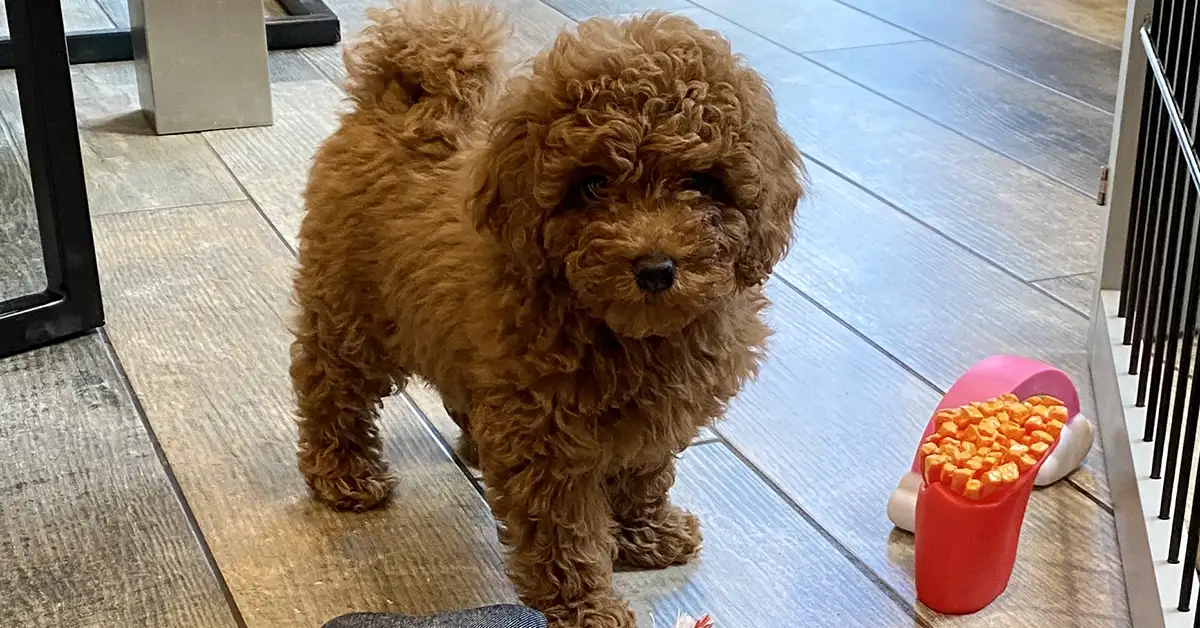Collar & Product Guides
Can Puppies Wear Leather Collars?
Bringing a new puppy home means making a lot of choices—food, training, sleeping arrangements… and yes, collars. One question that comes up quite often is whether leather collars are suitable for puppies, especially when they’re still growing and exploring the world (and chewing everything in sight). If you’re wondering whether it’s worth investing in leather at this early stage, let’s break it all down for you.
Is leather too heavy for a puppy?
Not if you choose the right one. A well-made leather collar for a puppy should be lightweight and soft, especially around the edges where it touches the neck. Some leather collars are chunky and stiff, which might feel overwhelming on a smaller breed or a young pup. That’s why many owners go for collars made from soft Italian leather, which feels much gentler on the skin and doesn’t weigh your puppy down.
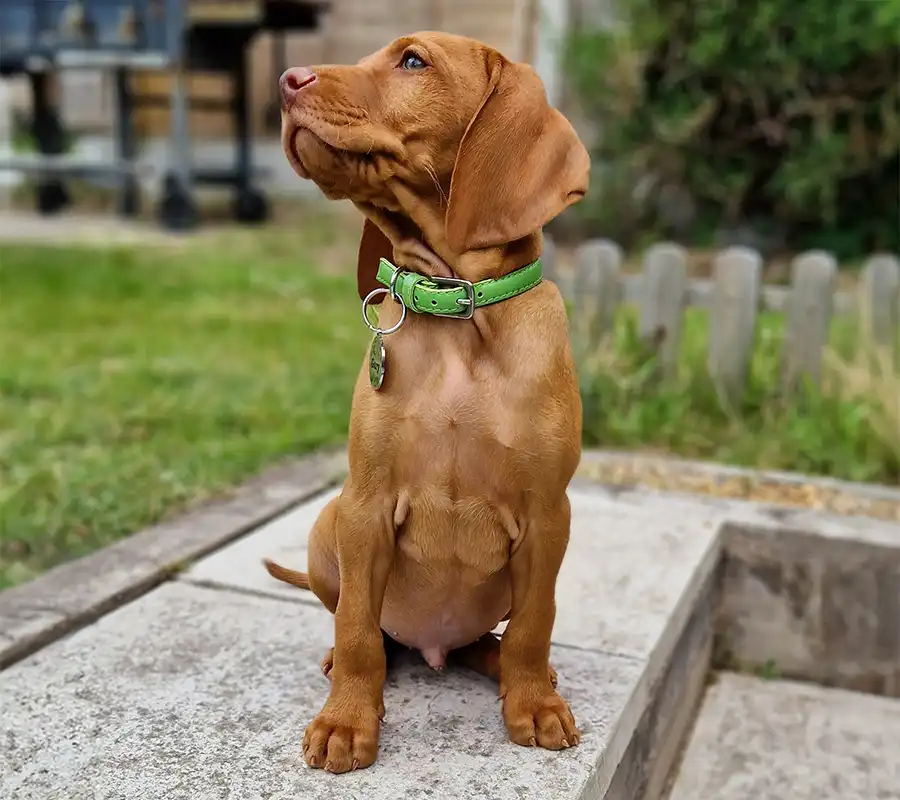
At Petiquette, our leather puppy collars are designed with comfort in mind—narrow, supple, and sized just right for little necks. If you’re unsure about the benefits of leather compared to other materials, you might also find it helpful to read Are Leather Dog Collars Better Than Fabric?
What size collar does a puppy need?
You’ll need to measure your puppy’s neck and choose a collar that gives enough room for a snug—but not tight—fit. A collar should rest against the coat without digging in or spinning around loosely.
Most puppies will need their collar size adjusted as they grow, so it’s a good idea to choose one that has enough holes to accommodate changes—or be ready to move up a size when needed. All of our puppy collars are made to order, so you can get a perfect fit from the start.
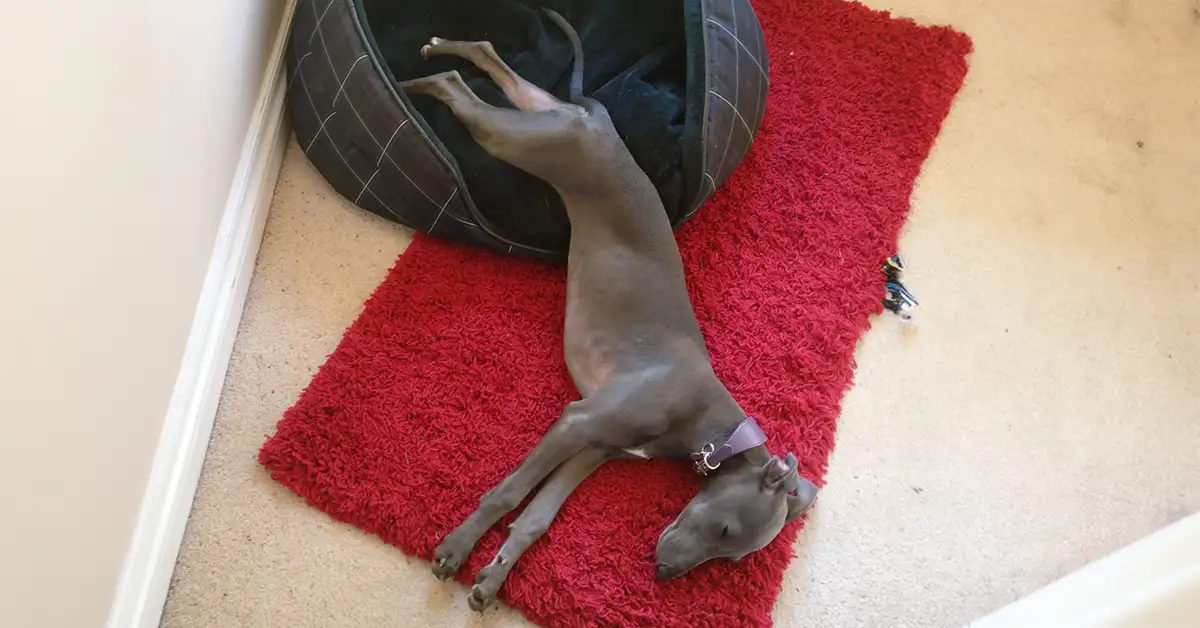
For a full breakdown of how to choose the right style and fit, our guide on Leather Dog Collars: Everything You Need to Know Before You Buy is worth a look.
Can puppies wear a leather collar all day?
Yes, if it’s a lightweight house collar designed for daytime wear. Puppies don’t need to wear their walking collar 24/7—especially if it’s thick or bulky. Instead, many owners use a slim ID tag collar, sometimes called a house collar, for daytime use around the home.
These are ideal for keeping ID tags in place without the need for a lead ring, and they sit comfortably on your puppy’s neck while they go about their day. If you’re after something soft, lightweight, and stylish, our range has plenty of options that’ll grow with them.
Should I remove a puppy collar at night?
Yes, always. Puppies should never wear a collar when they’re unsupervised—especially overnight. While they may seem calm when they settle down for sleep, puppies are notorious for chewing, wriggling, and investigating anything within reach—including their own collar.
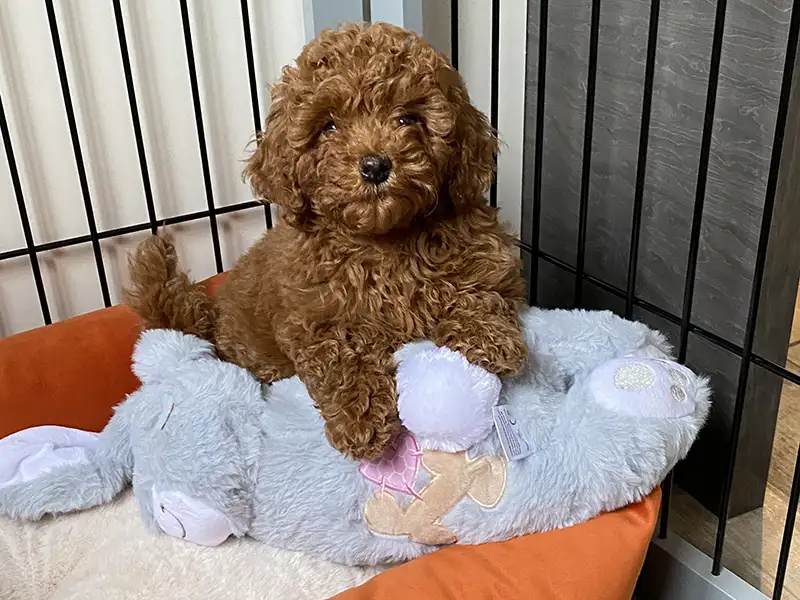
There’s a real risk that a puppy could get their jaw caught in the collar while trying to chew it, which could lead to panic or injury if you’re not there to intervene. Even a well-fitted, lightweight puppy collar isn’t safe to leave on overnight.
The best approach? Pop their collar on during the day when you’re around to keep an eye on them, and take it off at bedtime or anytime they’re left alone. Safety first, always.
What if my puppy tries to chew the collar?
Puppies are naturally curious (and teething), so they may try to nibble on anything they can reach—including their own collar, or more often, their playmate’s. High-quality leather is surprisingly durable and much more resistant to fraying than fabric, but it’s still best to supervise during playtime.
If your puppy is in a particularly chewy stage, keep their collar off during unsupervised play, and consider having a backup collar to use while training or outdoors. Curious about how leather holds up to real life wear? Have a read through What Customers Really Think of Our Leather Collars to see how they stand the test of time.
Is a leather collar OK for lead training?
Absolutely. Once your puppy is ready to begin short walks and lead training, a leather collar offers a reliable and comfortable option. Leather softens over time, so it naturally becomes more comfortable with use—and it’s far less likely to irritate or rub compared to cheaper materials.
When starting out, choose a narrow collar that allows for clear movement and communication without being bulky or stiff. Our leather puppy collars are just the right width to help you get started with confidence.
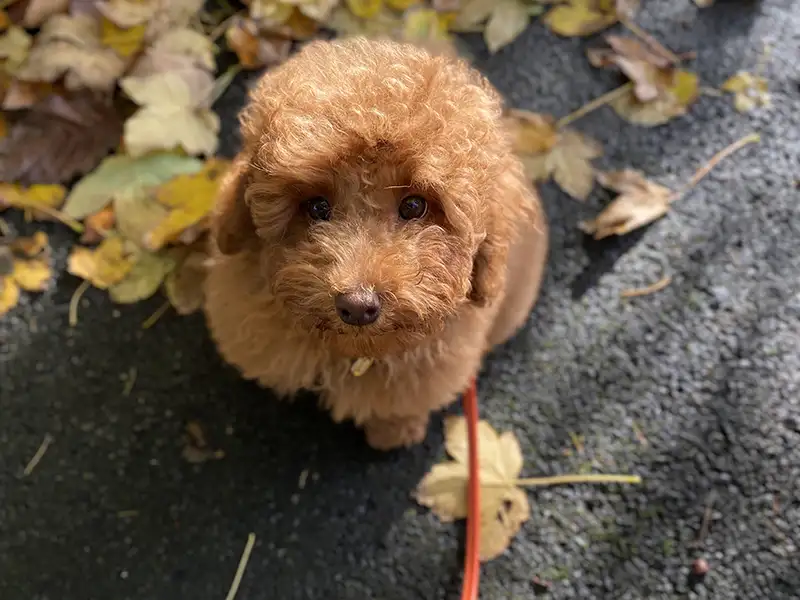
If you’re wondering about long-term comfort and fit, Which Collar Is Most Comfortable for Dogs? explains what to look for in an everyday collar.
When should I upgrade to an adult collar?
Every puppy grows at their own pace, but generally by the time they’re 6–9 months old, you’ll notice their puppy collar looking a bit tight or out of proportion. That’s usually a good time to move up to a standard leather dog collar, which is a little broader and sturdier for long-term wear.

If you’re curious about how long you can expect your dog’s collar to last once they’re out of the puppy stage, How Long Do Leather Dog Collars Last? offers some insight on longevity and care.
Ready to find your puppy’s perfect first collar?
Explore our full range of leather puppy collars—each one handmade to order with soft Italian leather, rust-proof fittings, and a custom fit for growing necks.
More Leather Collar Advice for Dog Owners
Looking for more guidance before choosing the right collar? These posts can help:
Explore more from the Leather Dog Collars collection:
- Leather Dog Collars: Everything You Need to Know Before You Buy
- Are Leather Dog Collars Good for Dogs?
- How Do I Clean and Care for a Leather Dog Collar?
- Which Collar Is Most Comfortable for Dogs?
FAQ: Leather Collars for Puppies
What age should a puppy start wearing a collar?
Most puppies can begin wearing a collar from around 8 weeks old, as long as it fits properly and feels comfortable. Start with a lightweight, narrow collar that won’t overwhelm their tiny neck.
Are leather collars good for puppies?
Yes, as long as they’re soft, lightweight, and sized correctly. Leather puppy collars made with supple Italian leather are a great option—they’re gentle on the skin and more durable than fabric.
What kind of collar is best for a puppy?
The best puppy collar is one that’s soft, slim, and fitted just right—not too loose, not too tight. Look for something that sits flat against the coat and doesn’t cause rubbing. A made-to-measure leather collar is ideal for growing pups.
Are puppies allowed to wear collars?
Yes—puppies are allowed (and encouraged) to wear collars for identification and training purposes. Just make sure the collar is safe, comfortable, and used appropriately for their age and size.
Should I take my puppy’s collar off at night?
Definitely. Collars should always be removed at night or anytime your puppy isn’t being supervised. Puppies often chew their collars, and there’s a risk they could get their jaw caught if left unattended.
Can I walk my puppy with a collar?
Yes, once your vet gives the go-ahead to start short walks, you can walk your puppy on a collar. Just be sure to use a comfortable, well-fitted one that doesn’t pull or rub. Our leather puppy collars are narrow enough for early lead training but sturdy enough to give you gentle control.

